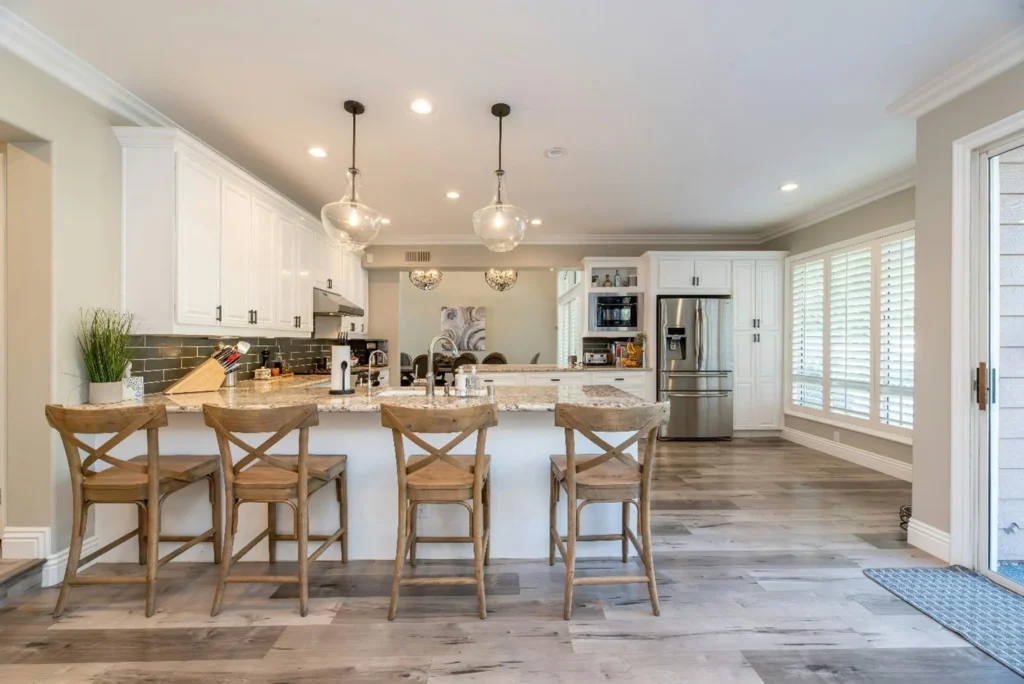
Understanding the average kitchen size dimensions is important when designing or reworking your cooking area. This guide will help you navigate commonplace dimensions and factors that affect kitchen layouts.
Table of Contents
Maximizing small kitchen dimensions
If you’re working with a smaller kitchen, consider the usage of area-saving solutions to beautify capability. Utilize vertical garage with wall-installed shelves, opt for compact home equipment, and include multi-practical fixtures. Light colors and reflective surfaces can make the distance feel larger. Clever employer and layout tricks can remodel even the most compact kitchen into a quite useful and enjoyable area.
Typical Kitchen Sizes by using Home Type
The length of a kitchen can vary extensively primarily based on the sort of home. Here’s an overview of typical dimensions:
Small Apartments

In smaller flats, kitchens are regularly compact. These areas typically degree among 70 and a hundred square feet. To maximize performance, designs like galleys or L-shaped layouts are usually used.
Medium-Sized Homes:

For medium-sized homes, the kitchen normally falls between hundred fifty and 250 rectangular feet. This size variety supports extra features together with islands or breakfast areas, balancing space and functionality.
Larger Homes

Larger homes regularly function in kitchens that exceed 250 square toes. High-cease designs may also have kitchens over four hundred rectangular feet, taking into consideration multiple cooking zones, sizable countertops, and excessive-stop home equipment.
Factors Influencing Kitchen Size

Several elements can affect the kitchen mass and how the distance is applied:
Overall Home Size:
The size of the house plays a significant function in figuring out the kitchen’s dimensions. Larger houses generally have greater spacious kitchens, even as smaller homes or apartments may have greater compact ones.
Design Trends:
Modern design traits regularly choose open-plan layouts that integrate the kitchen with residing and eating areas. This can make the kitchen seem large and extra incorporated with the rest of the house.
Household Needs:
The needs of the family also have an impact on kitchen mass. Larger households or individuals who entertain frequently would possibly require extra space for cooking and dining.
Functional Requirements:
How you use your kitchen—whether or not for everyday meals, cooking for huge gatherings, or common interest—can dictate the proper size. A large kitchen gives more counter space and storage, which is useful for sizable use.
Popular Kitchen Layouts and Their Sizes
Different layouts of the kitchen can impact the perceived mass and functionality. Here are some not-unusual layouts and their standard dimensions:
Galley Kitchen:

This layout features parallel countertops and is regularly utilized in smaller areas. The ordinary length of a galley kitchen tiers from 70 to 100 square feet, making it green for compact regions.
L-Shaped Kitchen:

An L-shaped kitchen consists of countertops on adjoining partitions. Average sizes for this format range from a hundred and 150 to 250 rectangular feet, offering flexibility and further storage.
U-Shaped Kitchen:

With countertops on three sides, the U-fashioned kitchen gives enough workspace and storage. This layout commonly requires 200 to 300 rectangular feet, making it suitable for large houses.
Island Kitchen:

Incorporating a vital island, the average kitchen size with an island usually begins at around 250 square feet and may be larger depending on the scale of the island and standard layout. It affords ample counter area and is right for both cooking and unique.
Determining the Right Kitchen Size

To select the right kitchen size for your wishes, do not forget the subsequent:
Assess Your Cooking Habits:
Reflect on how often you prepare dinner and entertain. If you regularly put together big food or host gatherings, a bigger kitchen might be necessary.
Measure Your Space:
Accurately degree the region designated for the kitchen. Ensure that there’s sufficient area for home equipment and snug motion within the kitchen.
Consult a Professional:
If you’re unsure approximately the pleasant kitchen mass, do not forget to consult a kitchen clothier. They can help optimize the layout to fulfill your particular wishes and preferences.
Conclusion
Selecting the best kitchen length is important for creating a space that is both functional and enjoyable. By understanding commonplace kitchen dimensions and thinking about factors like domestic size, design possibilities, and household needs, you may make informed choices. Whether designing a compact galley kitchen or a spacious island layout, knowing the right length will assist you reap a nicely designed and green cooking region.
A well-planned kitchen layout, primarily based on the right kitchen mass, complements usability and integrates seamlessly with your property. Proper planning ensures that your kitchen meets your way of life requirements and contributes to more fun cooking.







